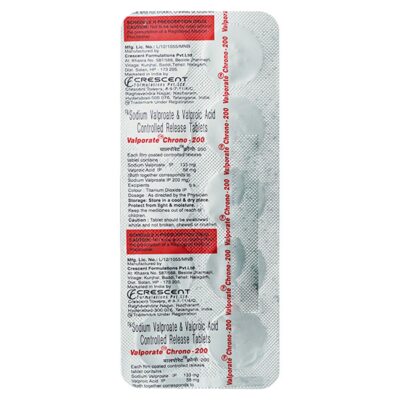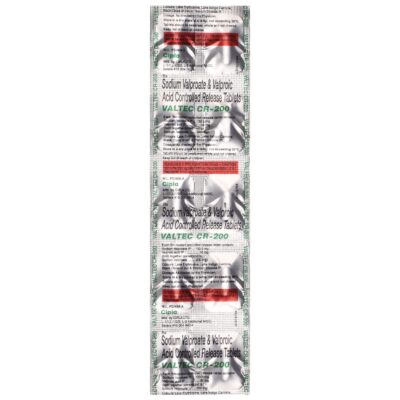🧠⚡💊 Sodium Valproate 133.5mg + Valproic Acid 58mg Tablet: Dual-Form Epilepsy Management and Mood Stabilizer
The combination of Sodium Valproate 133.5mg and Valproic Acid 58mg in a single tablet is a widely used and well-established antiepileptic and mood-stabilizing medication. Together, these components deliver the equivalent of 200mg of valproate, offering both immediate and extended action. This dual-formulation improves seizure control, patient compliance, and clinical efficacy.
🔬 Mechanism of Action
Sodium Valproate and Valproic Acid are closely related compounds. They work together to increase levels of gamma-aminobutyric acid (GABA)—a major inhibitory neurotransmitter in the brain. The mechanism involves:
-
Enhancing GABA synthesis
-
Inhibiting GABA degradation
-
Modulating sodium and calcium channels
This helps stabilize the electrical activity in the brain, making it effective against multiple seizure types and mood disorders.
📌 Indications and Uses
This formulation is used in the management of:
-
Epilepsy, including:
-
Generalized tonic-clonic seizures
-
Absence seizures
-
Myoclonic seizures
-
Partial seizures
-
-
Bipolar disorder: As a mood stabilizer, especially for manic episodes
-
Migraine prophylaxis (off-label in some regions)
-
Aggression or impulsive behavior in neurological disorders (off-label)
It is suitable for children and adults, depending on the dose and clinical need.
💊 Dosage and Administration
-
The total valproate content in this tablet is 200mg.
-
Starting dose depends on the condition:
-
Epilepsy: 10–15 mg/kg/day, gradually increased to 30–60 mg/kg/day as needed.
-
Bipolar disorder: Typically 750–1000 mg/day in divided doses.
-
-
Should be taken with food to minimize gastrointestinal discomfort.
-
Dosage is individualized based on age, weight, response, and serum levels if needed.
⚠️ Precautions and Warnings
-
Liver function monitoring is essential, especially in the first 6 months.
-
Use with caution in:
-
Children under 2 years
-
Patients with liver disease
-
History of urea cycle disorders
-
-
Pregnancy warning: Known teratogenic effects (neural tube defects). Should be avoided unless no alternatives are effective.
-
Not to be used in patients with known hypersensitivity to valproate.
🤒 Side Effects
Common side effects:
-
Nausea, vomiting, indigestion
-
Tremor, drowsiness, dizziness
-
Weight gain
-
Hair thinning (usually reversible)
Serious side effects:
-
Liver toxicity
-
Pancreatitis
-
Blood disorders (thrombocytopenia)
-
Severe allergic reactions
-
Hyperammonemia or encephalopathy
Seek immediate medical help if symptoms like abdominal pain, yellowing of the skin, persistent vomiting, or confusion appear.
🔄 Drug Interactions
-
Increases levels of Lamotrigine (risk of skin rash)
-
May affect levels of Phenytoin, Phenobarbital, and Carbamazepine
-
Enhanced sedative effects when taken with CNS depressants or alcohol
-
May interfere with anticoagulants (e.g., warfarin)
🧊 Storage Instructions
-
Store at room temperature (15–30°C)
-
Protect from moisture and heat
-
Keep out of reach of children
📝 Conclusion
Sodium Valproate 133.5mg + Valproic Acid 58mg is a versatile, well-studied therapy for a range of neurological and psychiatric disorders. Its balanced formulation offers rapid onset and sustained control of seizures and mood symptoms. Regular monitoring, cautious dose adjustments, and adherence to medical guidance are essential to optimize benefits and minimize risks.
Note: This information is intended for educational purposes and should not replace professional medical advice. Always consult a healthcare provider for personalized guidance.





Reviews
There are no reviews yet.